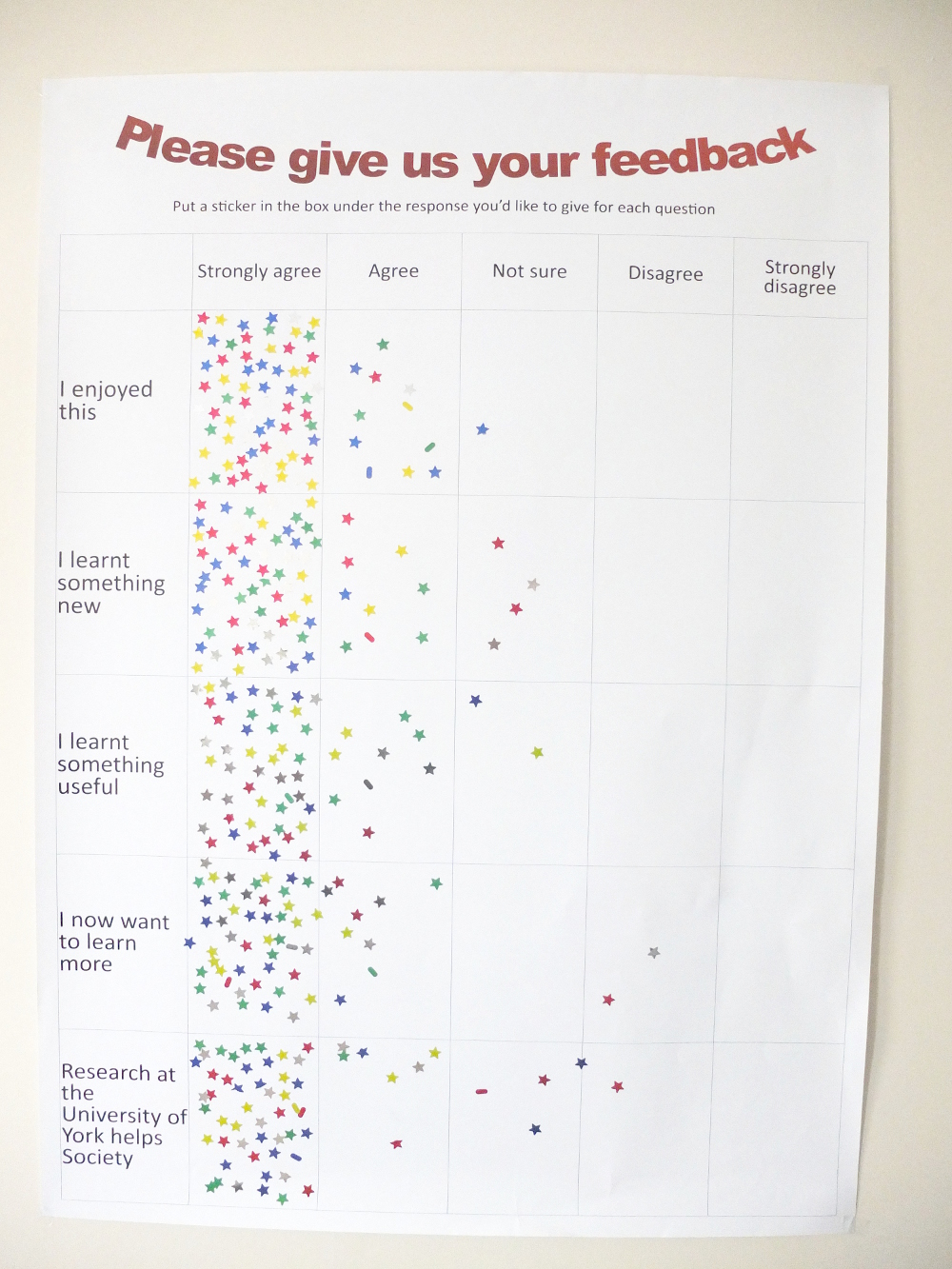Science out of the Lab
.jpg)
Taking the science of chronic diseases and disorders out onto the streets of York three years running - an interactive roadshow of some of the world-leading research being undertaken at the University into some of the hardest to treat medical conditions.
In June 2012 'Science out of the Lab: Chronic Diseases and Disorders' was held for the first time in the Centre of York, attracting almost 450 visitors. The event was covered live by Radio York and brought together University researchers, members of the NHS, health charities and other York-based organisations for a day of hands-on science engagement, learning and fun. The York Press subsequently produced an article about the event.
The event re-ran in 2013 with contributions from the Departments of Physics, Biology, Sociology, Chemistry, Health Sciences and HYMS. Highlights included an illustration of Raman spectroscopy and its potential medical uses and an exhibition of anonymous postcards and related images articulating the experiences of the relatives of coma sufferers. This time the event attracted almost 800 visitors who were overwhelmingly positive in their responses. The York Press once more provided coverage and one of the contributors gave an interview on Radio York.
In 2014 ‘Science out of the Lab’ was held over two days and received over 850 visitors on the Saturday who left extremely positive feedback regarding their enjoyment of the activities, what they had learnt and their impressions of the value of research and outreach being undertaken by the University (see bottom gallery image in right-hand column opposite). Stall holders included the York Computational Immunology Laboratory, Centre for Immunology and Infection, York Clinical Research Facility (a partnership between the University and the York Teaching Hospitals NHS Foundation Trust), Chemistry, Centre for Global Health Histories, Education, Biology and Health Sciences. Amongst the highlights were a simulation, using robots adorned with giant plush toy microbes, of leishmania parasites and white blood cells interacting and an activity creating 'super drug' molecules.
.png)

.jpg)
.jpg)
.jpg)
.jpg)
.jpg)
.jpg)
